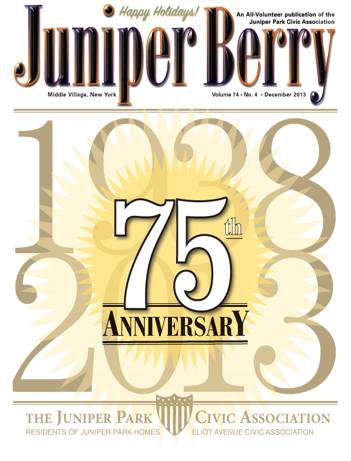If I’ve learned anything on my travels in Europe it’s that food and architecture closely mirror the disposition and personality of the people at the particular region. And, wherever I am, I want to become part of it to devour the air and architecture, along with the food, to become one with the place and allow the very dust to bore its way into my pores. In my fantasy, I become one with the spot and, borrowing from Keat’s quoting Milton, “…..forget myself to marble,” inspiring a pseudo symbiotic union.
This phenomenon may occur anywhere, of course – a South Pacific Island, Kenya or Des Moines, Iowa. For me it occurred in the cities of Munich and Florence.
Situated in Old Munich Gaststatten is a 16th Century restaurant, a charming blend of Gothic/Renaissance architecture. The dining room is an immense rectangular hall with oversized bench-lined tables supported by a stone floor that does nothing to soften the din of a thunderous Bavarian hand accompanying a raucous mixture of Wagnerian chants, a foot-slapping dance and jolly belly laughs. The music bounces off the stone floor enveloping the diner as it makes its way up the cathedral ceiling, slipping in and around massive hand-hewn crossbeams that loom big, bold and intimidating. There are, surely, restaurants in this city where one may enjoy a more tranquil atmosphere. In fact, Munich boasts six or seven starred Michelin restaurants. But the prevailing impression is that one does not dine in Munich; one EATS in Munich, a sort of daily assignment absent of ritual or protracted discussion.
The selection of a meal is usually accomplished within thirty seconds with the cheerful prodding of a rose-hued, large breasted woman who, while effortlessly clutching five steins of beer in each hand, informs you of your choice punctuated with, “Und a bier of course!” “Of course, of course, ya, and…”
Within minutes, my head and neck are horizontal as I attack an indecently gargantuan plate of bratwurst, steaming sauerkraut and white vinegar-dressed potato salad, involuntarily emitting grunts and burps without so much as a glance about. My right hand is radar inspired, zeroing in precisely on the cold stein of Becks to my right. Only when the last morsel is devoured (in world class time) do I sit back, pat my expanded stomach and join my fellow diners in a contented smile of appreciation. Suddenly a hand the size of a large porterhouse steak swoops over my shoulder narrowly missing my chin and, with computer-like efficiency removes my plate, utensils and napkin in one motion.
“It was gud?” Rosy Hue commands. “Oh! Good, good, very good. And so much,” Then with the benevolence of a mother imploring her child to finish his milk. ”Now, you have some beer and enjoy da music.”
A glance at my watch reveals that the entire experience lasted less than 25 minutes and, no doubt, added three inches to my waistline. I graciously decline a second stein of beer and waddled my way to the exit through solid oak doors, which yield reluctantly. I’m grateful for the steely crisp Bavarian air and welcome the mile and a half walk back to my guest house where I settle under a sinfully delightful featherbed, recounting the things I love.
Even the busiest trattoria in Florence emits a far more subdued ambiance than is found in Munich. A low-slung wooden ceiling houses small tables topped with the flora of the season and gentle Vivaldi nurses the ears as a couple approximates the conflict in a Puccini opera, debating over the merits of melon with prosciutto or polenta with grilled Portobello mushrooms. And secondo piatti – would it be the risotto or the pasta?
“But the marinara sauce is too light,” she high C’d. ”But the risotto is too heavy,” he low D’d.
By the third act I’m determined to join the performance and make a serious study between the steak Florentine and the roast lamb. The waiter is not amused. Eyes rolling, he shifts impatiently, obviously intolerant of an American who dares to pretend. I hold my ground for a respectable minute or so and then decide on the “arrosto anello, per favore, grazie.”
Smiling at the couple nearby, I return the menu to the waiter with a nonchalant flip. Through clenched teeth framed by a visitors smile and a right hand pirouetting in mock triumph, he loudly proclaims: “Bravo Signore! Veddy good, veddy good. And will Signore be having red or white wine with his roast (ring?)”
Hunger became my ally and I made short work of the succulent roast lamb, ignored the dessert cart, and dragged my wounded pride toward the exit.
As I rounded the Plazza della Signoria, I was distracted by rhythmic, swaying hips gently caressed by soft white linen. My right leg suddenly betrayed me and my shoe wedged between the quaint cobblestones and I fell hard on my knee, startling the couple who rushed to my assistance. I waved them off with typical American aplomb as I leaped to my feet, exclaiming in my best Cary Grant, “I’m fine, Thanks folks. Nothing to it!”
As I approached the Ponte Vecchio, my knee began to swell and throb and I sought comfort in one of those poorly lit cafes on the far side of the Arno River and settled at a corner table veiled in blue/gray smoke licking up the wall.
Italian students from the University of Florence were engaged in a heated stacco debate, gesturing dramatically, pressing the merits of Fellini to American students from the Italian Syracuse University campus at Plazza Savonarola, who were promoting Quenten Tarantino. I chuckled nostalgically to myself, recalling my own undergraduate days at St. Francis College in the early 60’s when I sat holding hands with an impossibly virtuous, impossibly beautiful girl from St. Joseph College on Clinton Avenue in Brooklyn, drinking cheap red wine in Café Figaro in Greenwich Village, and deciphering the message in Fellini’s, “La Dolce Vita.”
I downed a quick espresso and quit the place thinking, enough, Fellini and Tarantino both carried the day in their time.
I made my way through the dark, narrow alleys at the Oltrarno to my refuge at Signora Cellini’s pensione, greeted by the luminous eyes and drowsy meow of Dolce Torte, resident cat. The omnipresent and omniscient signora walked me to my room, left, and returned with an ice pack and a bottle of grappa. She threw open the window shutters, and the pungent scent of the river drifted through the thick air into the room, and the light from the city proper across the green river cast cobweb shadows on the wall like a scene from a 1940’s Hitchcock film noir.
“I think you get hurt tonight here,” la Signora said pointing to her knee, “and here,” she added, with a hand over her heart. “But I know you always still love it, and will always return, si?”
I knew she was right. Once you and this city mark each other, it’s impossible to extricate yourself. It’s true love and everything is forgiven. Florence offers lots of fine things to do and have fun with, even if you fall short of dramatic eloquence.
I still have time to redeem myself. Tomorrow I’ll steer the Alfa Romeo south through the dappled green and gold rolling hills of Tuscany, thrilling to the throaty growl of the engine as I swing the car around twisting roads dotted with angular, sentinel Cyprus trees, protective reincarnations of Etruscan land and lore. I’ll have a good, hand-carved wooden cane and limp into the restaurant Al Mangia overlooking the Plazza del Campo in Siena with a well worn copy of Freud’s, “Jokes and Their Relation to the Unconscious” under my arm. I’ll enjoy a hearty bowl of pasta e fagioli with thick crusted bread, sip a thick strong espresso, accompanied by a fiery local grappa, and toast the second decade of the new millennium, content that, mostly, it’s a swell thing this life, and I’m very happy to be part of it.




